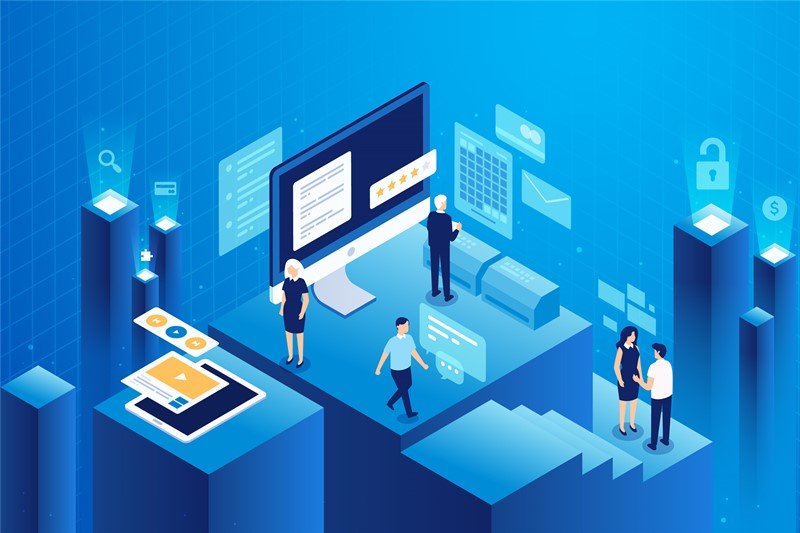According to a recent report by Frost & Sullivan, the global software licensing and monetization market (SLM) is slated for significant growth in the next 5 – 6 years. The report estimates that SLM will continue to grow by about 10.1% overall, with the highest growth being in the software-based segment of the market, at around 11.1% overall.
Why is this industry having so much success — and what are the obstacles standing in the way of its growth? In this post, we’ll highlight some of the top drivers, as well as some of the restraints, of this growing industry.
1) The Increase in Software-Based Selling
The digital revolution and the continued growth of the Internet of Things have made it easier than ever to transfer data. It’s now as simple as a few clicks of a mouse for customers to buy products. Customers can instantly download and start using software products from anywhere in the world.
As more and more companies adapt their business models to this new reality, they are increasingly understanding the importance of software licensing as a necessary means to protect their products—and that brings us to the bad news.
2) Anti-Piracy and Anti-Counterfeiting Initiatives
The disadvantage of a product that’s so easy to transfer instantly to your customer is that it can also be easy for them to transfer it to someone else’s. Piracy and counterfeiting can cause significant revenue loss if you aren’t careful about licensing enforcement. Shrewd businesses seeking to protect their bottom lines are embracing software licensing solutions to ensure that their products are used fairly.
3) Monetization of Embedded and Intelligent Devices
As smartphone apps and online platforms take over more and more industries, there is an increased need for software licensing platforms to manage the monetization of embedded and intelligent devices.
Subscription-based models are becoming more popular, many of them with multiple levels of subscription. This can make them extremely complicated to implement and manage without the use of a streamlined and automated software licensing system.
4) Transition from Homegrown Licensing to Commercial Software Licensing Management Systems
Companies following these market trends eventually reach a point where they need to choose between developing their own homegrown licensing system or outsourcing to a commercial software licensing management platform. Increasingly, the latter is becoming the most attractive option.
Frost & Sullivan found that homegrown licensing solutions often seem like a good option initially, but hurt businesses in the long-run.
Developing an in-house licensing system can be expensive, slow and risky. It requires an ongoing investment of significant resources to keep up with the growing needs of the company.
According to the report, “a homegrown solution is tempting but can prove to be costly to implement and maintain: the addition of a new licensing model, for example, may require a full development cycle. This can severely burden development teams, impact roadmaps and draw out time-to-market for new product releases.”
Commercial software licensing systems remove that burden from the company by providing a high-quality system tailored to the company’s specifications—and freeing the company’s staff to focus on developing their own products.
Frost & Sullivan also found that companies who embrace software licensing solutions feel its impact on their bottom lines. “Profit margins are growing fastest and revenue growth is most stable for companies that are pivoting to a software mindset and offer usage-based pricing options. SLM is a key enabler of this transition.”
Old Habits Die Hard – and So Do Homegrown Solutions
Despite all of the positive reasons for businesses to embrace software licensing solutions, Frost & Sullivan found that not all companies have been quick to adapt.
Why? Some companies that have been using their own homegrown licensing systems may still not see a need to transition to a commercial system, even if it might serve their company and end-users better, increase revenue, and solve operational inefficiencies.
There’s no doubt that shifting from hardware-based selling to software-based selling means changes – to a company’s structure, business processes, and mentalities within the organization. It also means needing to rethink how the company delivers its products and what services it offers to its customers. It means upfront costs that some small or medium-sized businesses may find daunting.
While ultimately, every company can benefit from innovation in the field of software licensing, sometimes fear and inertia win out.
The Growing Importance of Software Licensing Solutions
Frost & Sullivan’s report found that software licensing solutions are becoming increasingly important in today’s digital world. As more and more companies and industries throughout the world embrace digital business transformation, having a reliable and industry-leading software licensing tool is becoming business-critical.
And while it’s true that some companies are fighting against the digital transformation, overall, companies are continuing to recognize that software licensing solutions are more reliable, more dynamic, and more profitable for their business in the long term.


